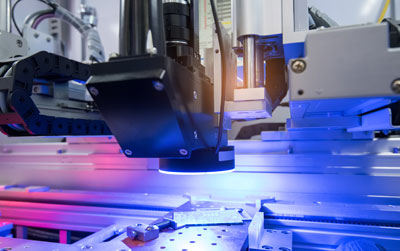 With more and more manufacturers utilizing machine vision systems for their production facilities’ inspections every day, it’s no longer just a question of if you have a machine vision inspection solution. You also have to be sure your inspection system is as accurate and as efficient as possible.
With more and more manufacturers utilizing machine vision systems for their production facilities’ inspections every day, it’s no longer just a question of if you have a machine vision inspection solution. You also have to be sure your inspection system is as accurate and as efficient as possible.
How Poor Accuracy Can Affect Your Production Line
Machine vision inspection has increased efficiency and throughput for countless manufacturers. Instead of relying on human inspectors, machine vision inspection uses a camera to capture images and quickly decide if finished products and packaging make the cut. Instead of only inspecting a sample, machine vision systems can often check every product and package.
When working properly, machine vision systems can perform inspections sometimes hundreds of times faster than humans. But if the inspection system is not calibrated properly or there is some other fault, poor accuracy can lead to big problems. Slower inspection rates or incorrect results can lead to reduced throughput and huge losses for the manufacturer.
7 Tips for Improving Machine Vision Inspection Accuracy
1. Choose the right lighting.
Even the best cameras can’t capture a clear image without the right lighting. For some applications, backlighting might produce the best results. In others, you might need bright field lighting or a low-angle linear array. Your system integrator can help you make the right choice.
2. Calibrate your lighting.
Once you know which type of lighting is best, further calibration may still be needed. Adjust the frequency and wavelength of your lighting system to reduce noise from your production environment or coatings that may be present on the parts and materials you are using.
3. Filter the lighting.
Machine vision works best in environments that stay consistent. But that can be hard to guarantee throughout the day. Ambient light, rearranged production lines, and shifting products can impact lighting. A lens filter can help eliminate undesirable light.
4. Trigger range function.
There might be situations where electrical noise in the production environment causes a false triggering of the inspection system. This can throw off analysis and result in products failing that shouldn’t have. A trigger range function can help you avoid this.
5. Add AI technology.
Artificial intelligence and embedded systems are becoming more accessible for all kinds of manufacturers. AI can reduce areas by making more intelligent decisions based on a robust dataset.
6. Improve part positioning.
Some passable components fail inspection because of poor positioning. Adding more precise tooling to hold parts for inspection can increase the accuracy of machine vision inspection.
7. Increase stability.
The equipment in production environments is often subject to noise and vibration that can lead to blurred images. This can result in unnecessary failures and repeated inspections.
Are you trying to find the right machine vision camera for your inspection system? Contact Phase 1 Technology Corp and let our experts help you find what you need.
